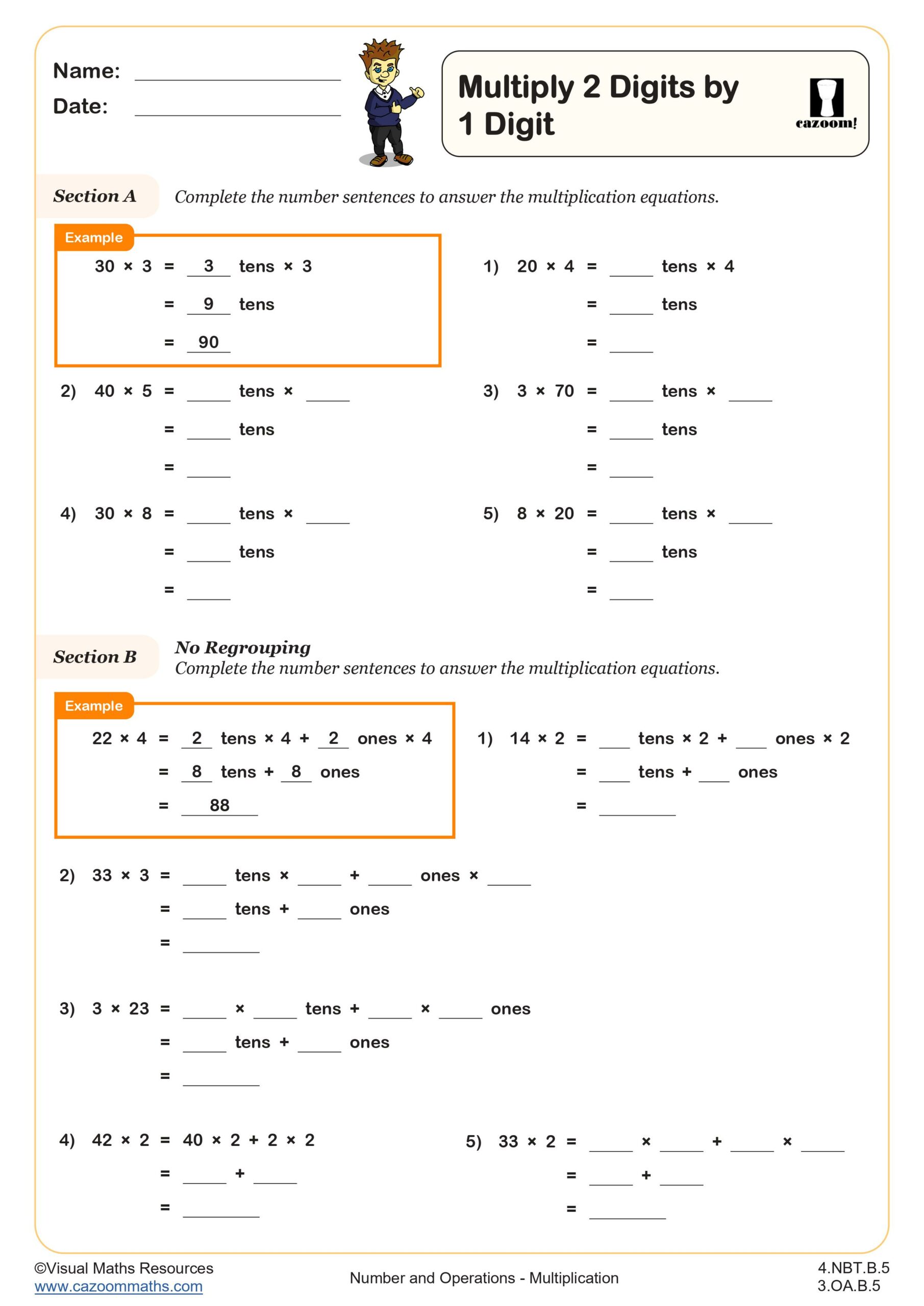Multiplying Three Numbers Together WORKSHEET
Multiplying Three Numbers Together WORKSHEET DESCRIPTION
This worksheet aims to not only give students practice of multiplying three numbers together but also to build understanding of the laws of commutability and associativity.
Section A uses arrays to show how the order of numbers in multiplications does not matter and students will represent the multiplication of three numbers using arrays.
The focus of section B is on rearranging numbers in multiplication to make calculation easier. Here pupils will not complete multiplication problems but rather consider which pairs of numbers they would multiply first and why.
These skills are put to the test in section C as pupils will now find the products of eight sets of three numbers.
Lastly, in section D, learners will use single digits to find different ways of making 24 when multiplying three numbers together.
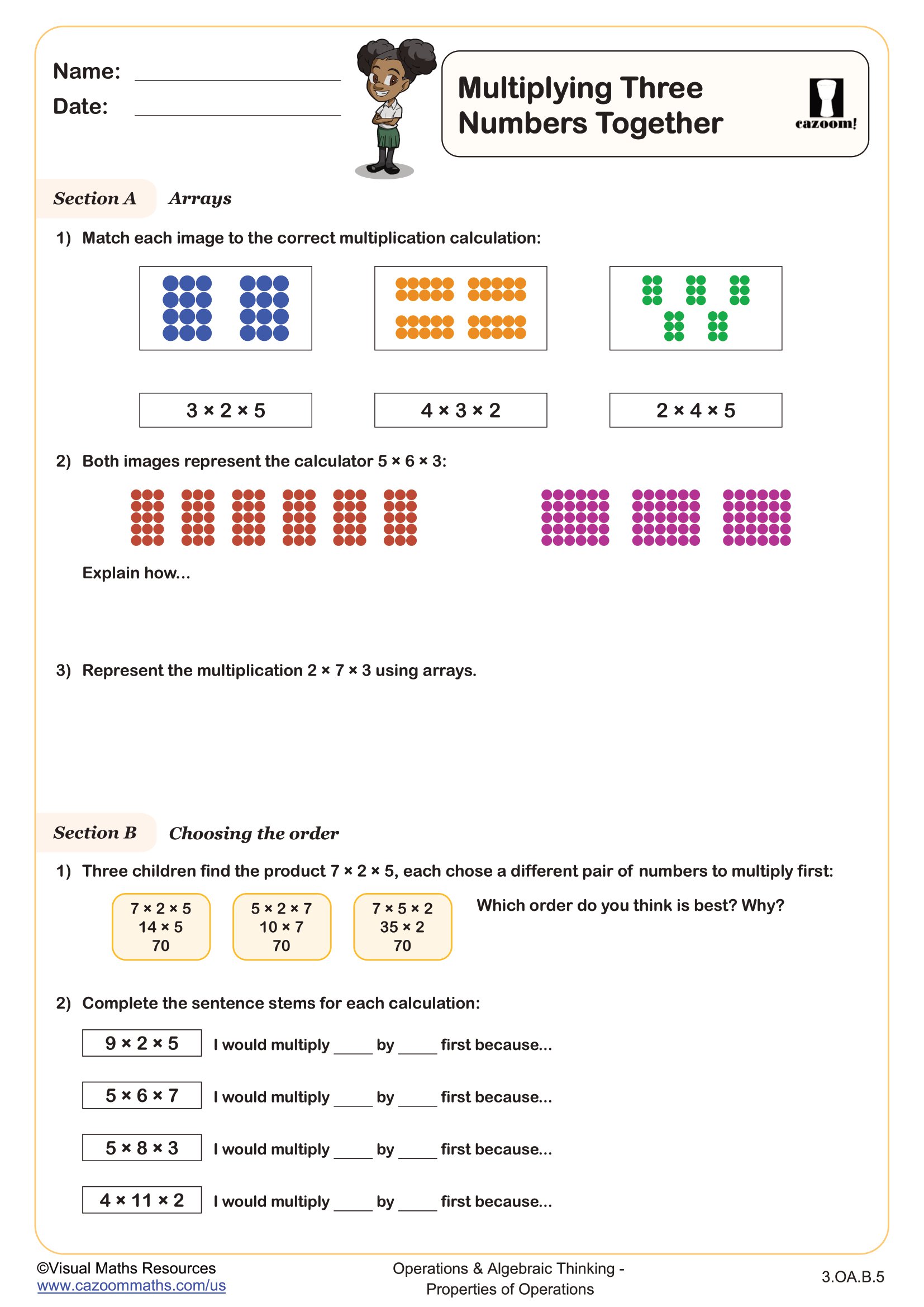
RELATED TO Multiplying Three Numbers Together WORKSHEET
Using Times Tables and Place Value to Multiply Mentally
Grades: 3rd Grade
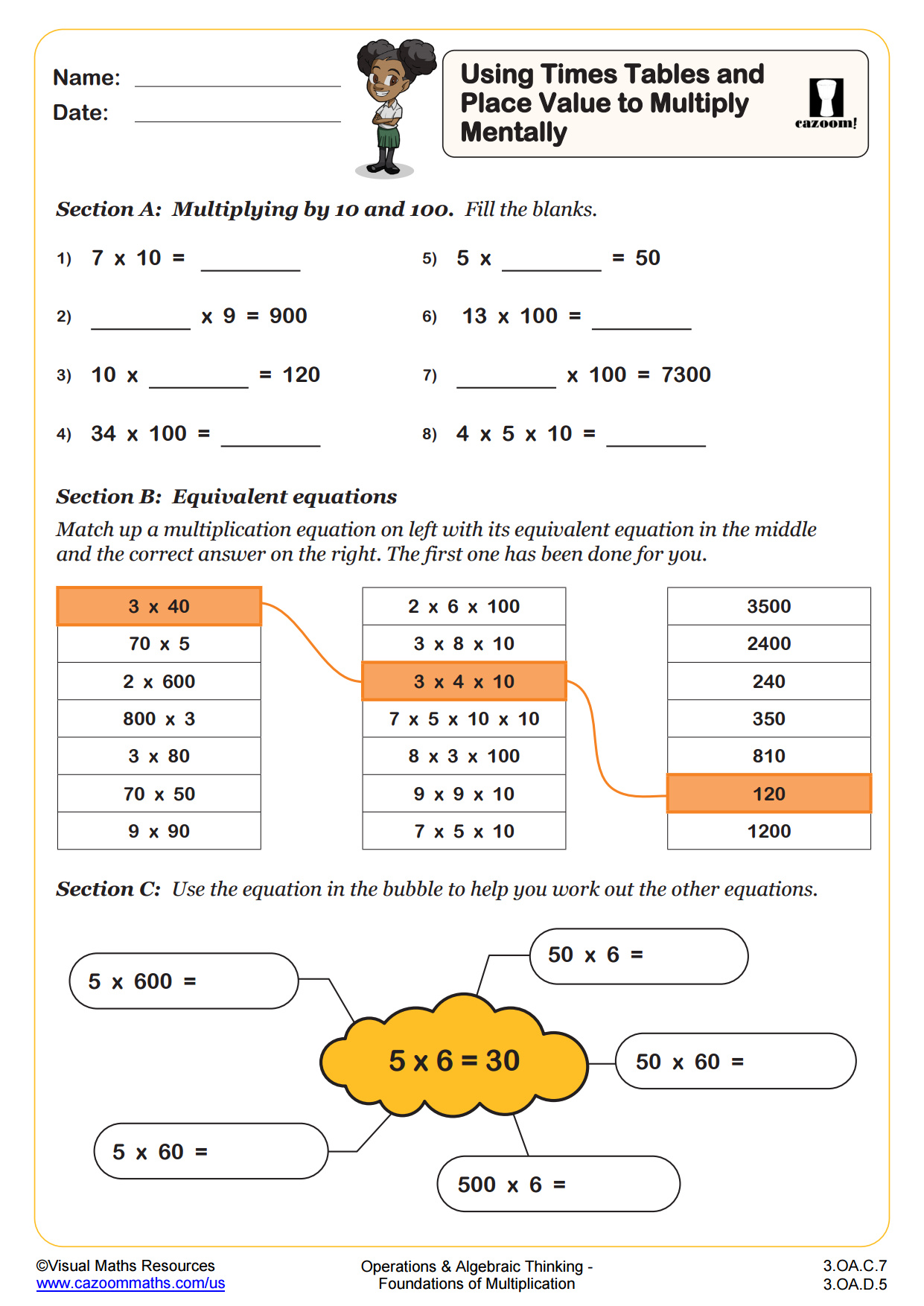
Column Method for Multiplying a 3 Digit Number by a Single Digit
Grades: 3rd Grade
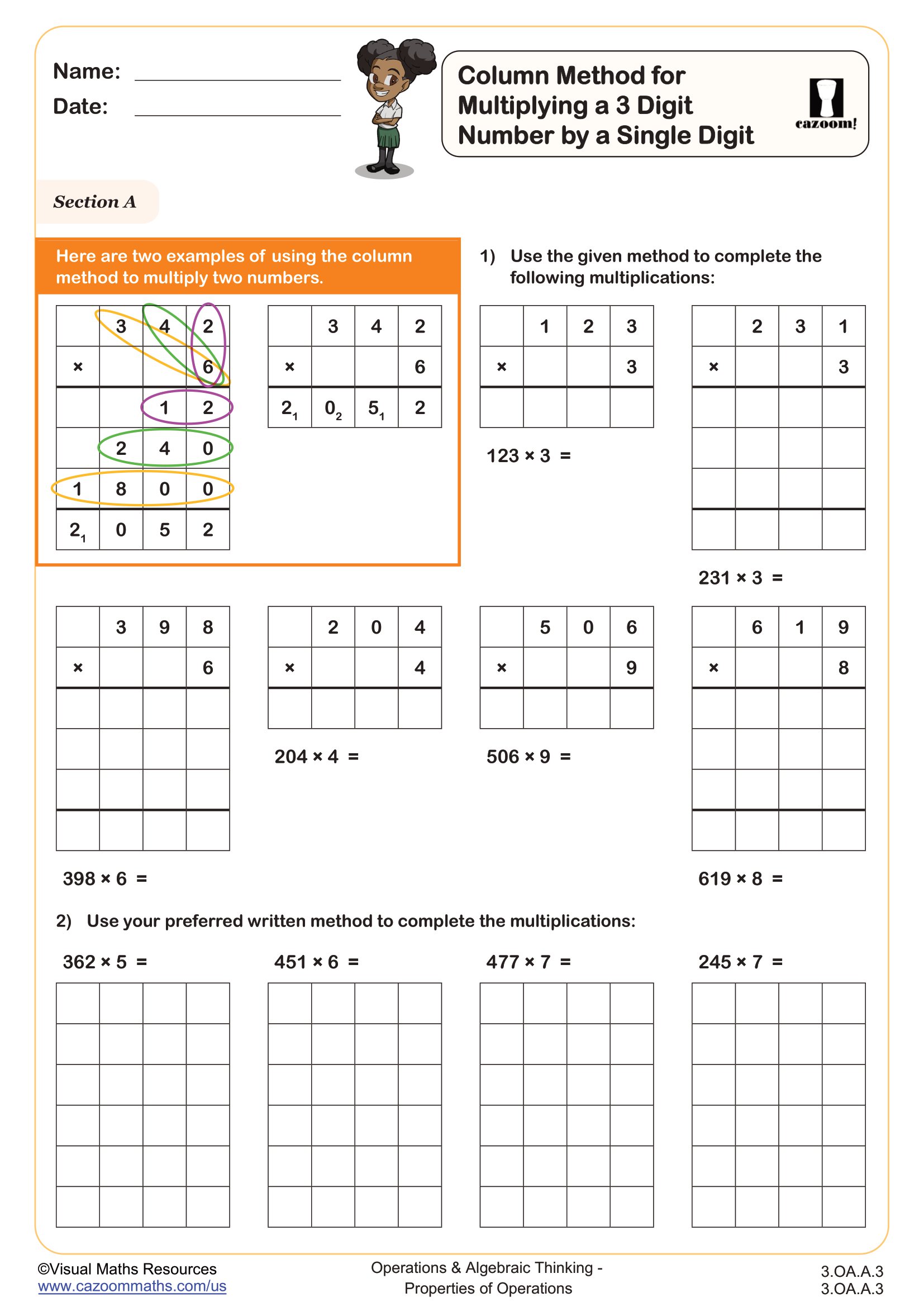
Using the Associative, Commutative and Distributive Properties for Multiplication
Grades: 4th Grade, 5th Grade
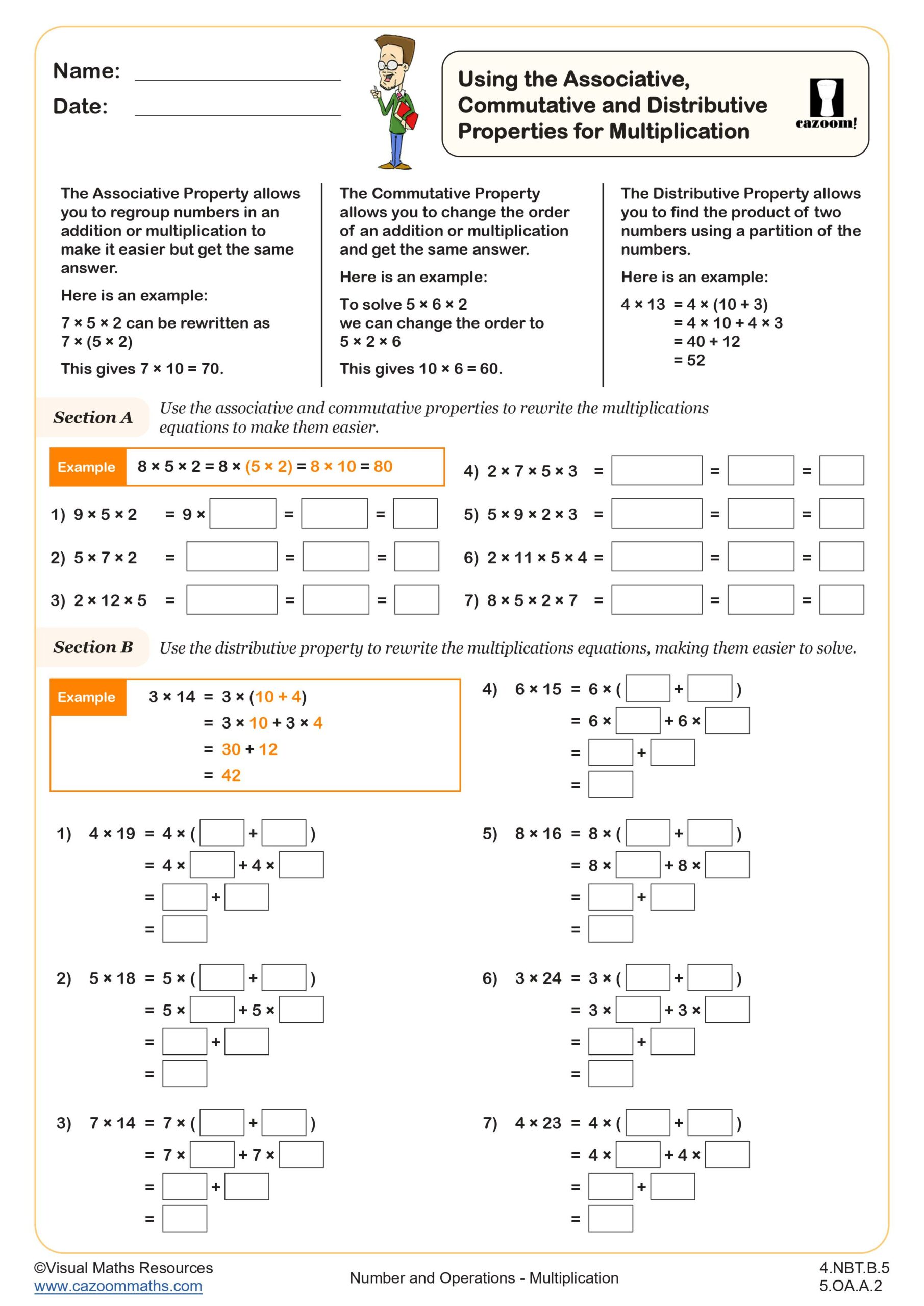
Multiply 2 Digits by 1 Digit
Grades: 4th Grade, 5th Grade
